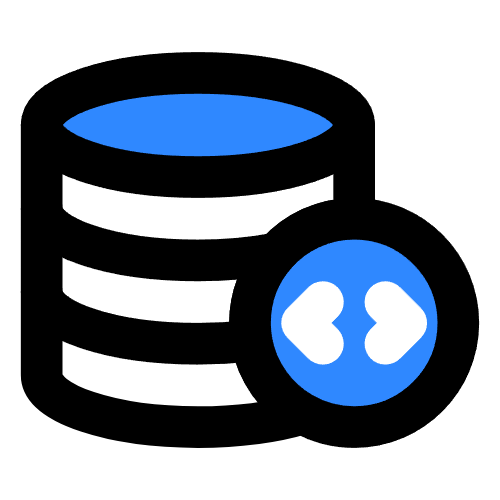发布时间:2024-11-16 15:38:00
 数据集:中文情感(积极&消极)句子分类数据集
806
80
数据集:中文情感(积极&消极)句子分类数据集
806
80
本内容由, 集智官方收集发布,仅供参考学习,不代表集智官方赞同其观点或证实其内容的真实性准确性,请勿用于商业用途。
以下是使用DistilBERT对积极和消极情感句子(如“天气晴朗,心情很好”)进行分类的完整技术博客,保证通俗易懂、可复现且贴合实际场景。
情感分析是自然语言处理(NLP)中的核心任务之一。本文将基于 DistilBERT 构建一个轻量化情感分类模型,识别句子的积极或消极情感(如“天气晴朗,心情很好”被分类为积极情感)。
确保安装必要的库:
pip install transformers torch pandas scikit-learn假设您有两个Excel表格:积极情感数据集.xlsx 和 消极情感数据集.xlsx,分别包含以下字段:id、积极(消极)情感内容、内容分词、中文拼音。
加载和合并数据:
import pandas as pd
# 加载积极和消极情感数据
positive_data = pd.read_excel("积极情感数据集.xlsx")
negative_data = pd.read_excel("消极情感数据集.xlsx")
# 为数据添加标签:积极情感标记为1,消极情感标记为0
positive_data['label'] = 1
negative_data['label'] = 0
# 合并数据集
data = pd.concat([positive_data, negative_data], ignore_index=True)
# 提取文本和标签
texts = data['积极(消极)情感内容'].values # 替换为实际字段名
labels = data['label'].values
# 检查数据样本
print(f"数据样本数量: {len(data)}")
print(data.head())
使用 Hugging Face 的 transformers 库中的 DistilBERT 分词器,将句子转化为模型可接受的格式。
from transformers import DistilBertTokenizer
# 加载DistilBERT分词器
tokenizer = DistilBertTokenizer.from_pretrained("distilbert-base-multilingual-cased")
# 定义分词函数
def tokenize_texts(texts, max_length=128):
return tokenizer(
list(texts),
max_length=max_length,
padding="max_length",
truncation=True,
return_tensors="pt"
)
# 对句子进行分词
tokenized_texts = tokenize_texts(texts)
print(tokenized_texts.keys()) # 包含 input_ids 和 attention_mask
使用 scikit-learn 将数据划分为训练集和测试集。
from sklearn.model_selection import train_test_split
import torch
# 划分训练集和测试集
X_train, X_test, y_train, y_test = train_test_split(
tokenized_texts["input_ids"], labels, test_size=0.2, random_state=42
)
# 转换标签为张量
y_train = torch.tensor(y_train)
y_test = torch.tensor(y_test)
X_train_masks, X_test_masks = train_test_split(tokenized_texts["attention_mask"], test_size=0.2, random_state=42)
加载 DistilBERT 模型并添加分类层。
from transformers import DistilBertForSequenceClassification
# 加载DistilBERT模型,输出2个类别(积极和消极)
model = DistilBertForSequenceClassification.from_pretrained("distilbert-base-multilingual-cased", num_labels=2)
# 定义优化器
from torch.optim import AdamW
optimizer = AdamW(model.parameters(), lr=2e-5)
使用 PyTorch 的 DataLoader 和训练循环训练模型。
from torch.utils.data import DataLoader, TensorDataset
# 构建数据集和DataLoader
train_data = TensorDataset(X_train, X_train_masks, y_train)
train_loader = DataLoader(train_data, batch_size=16, shuffle=True)
# 模型训练
device = torch.device("cuda" if torch.cuda.is_available() else "cpu")
model.to(device)
epochs = 3
for epoch in range(epochs):
model.train()
total_loss = 0
for batch in train_loader:
b_input_ids, b_input_mask, b_labels = tuple(t.to(device) for t in batch)
# 清零梯度
optimizer.zero_grad()
# 前向传播
outputs = model(input_ids=b_input_ids, attention_mask=b_input_mask, labels=b_labels)
loss = outputs.loss
total_loss += loss.item()
# 反向传播
loss.backward()
optimizer.step()
print(f"Epoch {epoch + 1} | Loss: {total_loss / len(train_loader):.4f}")
在测试集上评估模型性能。
from sklearn.metrics import accuracy_score, classification_report
# 模型评估
model.eval()
with torch.no_grad():
outputs = model(input_ids=X_test.to(device), attention_mask=X_test_masks.to(device))
predictions = torch.argmax(outputs.logits, dim=1).cpu().numpy()
# 计算准确率
accuracy = accuracy_score(y_test, predictions)
print(f"测试集准确率: {accuracy:.4f}")
# 输出分类报告
print("分类报告:\n", classification_report(y_test, predictions))
对新句子进行情感分类。
def predict_sentiment(sentence):
inputs = tokenize_texts([sentence])
input_ids = inputs["input_ids"].to(device)
attention_mask = inputs["attention_mask"].to(device)
with torch.no_grad():
outputs = model(input_ids=input_ids, attention_mask=attention_mask)
prediction = torch.argmax(outputs.logits, dim=1).item()
return "积极情感" if prediction == 1 else "消极情感"
# 测试新句子
sentences = [
"天气晴朗,心情很好。",
"今天的工作很糟糕,令人沮丧。"
]
for sentence in sentences:
print(f"句子: {sentence}\n情感预测: {predict_sentiment(sentence)}\n")
假设输入句子如下:
"天气晴朗,心情很好。"
"今天的工作很糟糕,令人沮丧。"
输出结果:
句子: 天气晴朗,心情很好。
情感预测: 积极情感
句子: 今天的工作很糟糕,令人沮丧。
情感预测: 消极情感
distilbert-base-multilingual-cased,支持中文句子分析。通过本文的指导,您可以快速实现一个基于 DistilBERT 的句子情感分类模型,适用于多种情感分析任务。
这种数据集通常包含带有标记的文本,其中标记了特定的信息实体或概念,如人物名称、组织机构、日期等。这些数据集用于训练模型从自由文本中提取关键信息。帮助模型理解文本的深层含义,并从中抽取有用的信息。